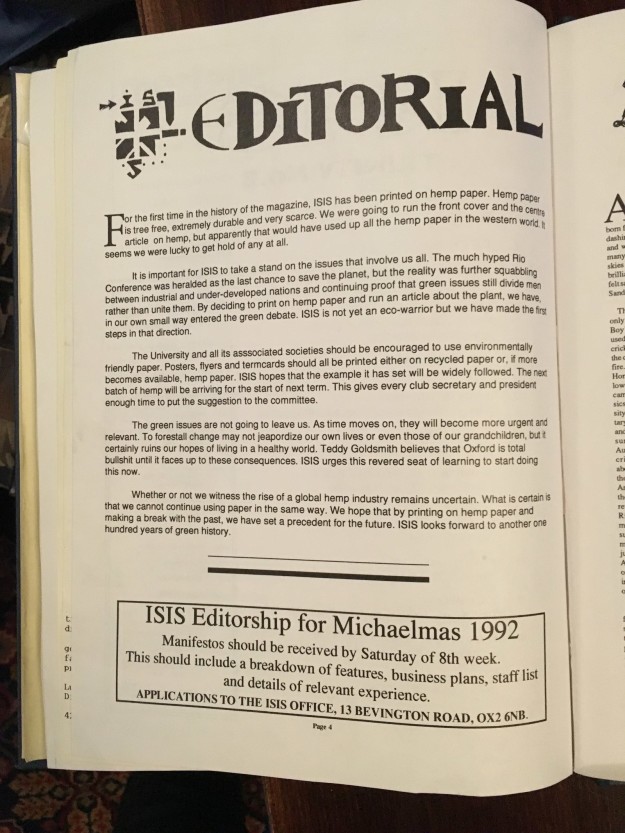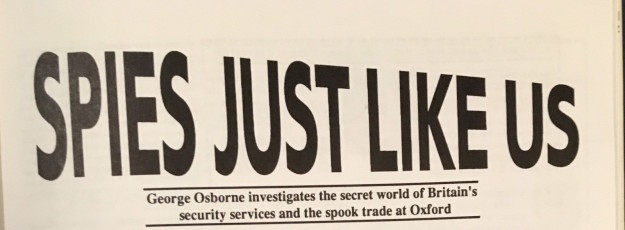The tension in the terraces of The Hive was palpable as the Oxford-Cambridge Varsity double-header got under way with the Women’s match.
Cambridge had a lot of the early possession, using great control of the ball in the midfield to force multiple chances with the speed of striker Xelia Mendes-Jones, who has made a habit of putting away hat-tricks in the BUCS league. Whilst she seemed uncatchable chasing Cambridge’s long balls through the middle, the unwavering pressure of Oxford’s back four meant that she was never given the chance to trouble May Martin, who proved a very safe pair of hands in goal throughout the first half.
Impressive on the counter-attack, Oxford found some early success with quick balls down both wings, as Caroline Ward and Becca May began what would be a standout performance from each of them. Some skillful play outside of Cambridge’s box saw Colleen Lopez round the Light Blue midfield and it was only the tireless work of Cambridge right-back Beccie Graves that saw the early chances of lone striker May not develop into anything more. Despite enjoying fewer chances in the box, Oxford’s accuracy under pressure saw them put more shots on target as they headed into the changing rooms at 0-0.
The Oxford team rallied, despite their frustration with a very solid Cambridge back four, and whatever the seasoned Oxford management said saw a marked shift in play as they headed out for the second half. Oxford began to make full use of the width in their heavily-loaded midfield to build their counter-attacks more slowly, giving May enough time to position herself for the through ball.
Just two minutes into the second half this newfound momentum saw Oxford capitalise on their accuracy in midfield; Ellana Slade’s pinpoint pass found May as she barged past Cambridge captain Gerda Bachrati and slotted home Oxford’s first with a strike across the Cambridge keeper.
Cambridge responded by ramping up their aggression, finding Becca Hirst more frequently as Bachrati began to open up the left wing with a few long balls. Eventually, Cambridge were rewarded for their pressure with a free-kick on the left of the box, whipped in by Bachrati to a Cambridge formation which had the Oxford defence confused. After a bundled attempt at a clearance, Light Blue midfielder Ceylon Hickman headed the ball into the far left post of the Oxford goal and past the hands of Martin to bring the score level.
Despite finally having some luck in the Oxford box, Cambridge still could not cope with the speed and aggression of the Oxford counter-attack, and with fifteen minutes left May found herself with a little space on the right wing, although with limited support. Nevertheless, after rounding Bachrati, May showed shades of a 2012 Papiss Cisse with a perfectly struck ball over the keeper’s head and into the bottom left corner.
With fatigue creeping in, Cambridge threw Daisy Luff up front to try to trouble Martin a little more, but even with a beautifully worked chance through the middle of the Oxford defence, Luff’s through ball to Hirst still wasn’t enough to draw level.
With only four minutes left on the clock, once again it was Rebecca May who capitalised on a scrappy clearance from the Cambridge right-back. She found herself in space with only Laura Bleehen, the Cambridge keeper, to beat. With a carefully timed nudge to the left, May rounded Bleehen and proceeded to roll the ball into the back of the net as the Light Blue centre-backs chased it over the line.
Following May’s hat-trick, the Dark Blues looked to secure their third consecutive Varsity win as the Men’s teams prepared to take the field.
As the two Blues warmed up with 134 years of Varsity hostility sitting between them, their minds only focused upon the game that lay ahead. Even though the Dark Blues had secured a 4-2 win and a 0-0 draw away in their last two matches against Cambridge this season, and victory at the last two Varsities, being the favourites going into the Varsity Match would never be enough to stop either side from putting every part of themselves into the match.
From the kick-off, Oxford’s dominance was obvious. A quick move by Dominic Thelen, Oxford’s top scorer, saw him pickpocket Cambridge’s full-back and hit a slow shot on goal. Michael Feeney’s attempt to finish the job saw the linesman raise his flag, to sighs of relief from Cambridge. Despite some shaky passing in the early stages, a movement through midfield saw Cambridge finally secure a free kick close to the Oxford box.
Defensive confusion meant they got away two shots: the first was a little wide and deflected, but the second from George Herring was the first to test Oxford goalkeeper David Windmill who kept his cool and collected the ball.
After this brief intermission, Oxford regained their dominance, slipping ball after ball down the left wing to wing-back Alex Urwin, who seemed to be perpetually in space. Working through Urwin and midfielder Wulfie Bain to Feeley, Oxford kept the pressure up and forced a corner. Pinged in from the left by Urwin, Oxford flooded the box. Sam Hale brought the ball down in front of goal before Thelen, ever-present, buried it to take the lead.
Still looking a little unsure in possession Cambridge struggled to put much together until Andy Sears-Black, a Cambridge fan favourite, followed up on a volley from the edge of the box, blasting the ball into Windmill who didn’t even flinch before taking the ball and moving it back up the left wing.
Uncharacteristically, there was disarray in the Oxford box; the ball was cleared but was quickly fired back in. It found its way to the back post, where full-back Ben Bolderson delightfully lofted the ball over the Oxford keeper. Against the run of play, Cambridge were level.
The Oxford dressing room was initially deflated at half-time, but a rousing speech from the coach reminded the players of the calibre of their first half performance and reignited the Dark Blues’ spark.
Cambridge started the second half stronger, putting Oxford under early pressure and stopping them from playing their passing game. However, the game began to open up and Oxford found space. Oxford not only looked more dangerous on the ball, but they also proved to be a threat from the dead-ball. Corners and free-kicks almost always resulted in a chance whilst Cambridge found it hard to deal with Urwin’s Rory Delap-esque long throws into the box.
In a quick turn of events, Oxford translated their dominance of possession into tangible results, with back-to-back goals. The first was a Salama own goal, turned in from a low and hard Thelen cross, created by his pace down the right flank. After a goal-line clearance and scramble within the box, Oxford’s foreign talent, Joan Crespo, coolly slotted the ball into the bottom right corner, giving Oxford a two-goal lead.
Chasing a two-goal deficit Cambridge looked like a beaten team. But, with ten minutes to go, they found a goal out of nowhere. A delightful through ball was met with a stunning finish, which David Windmill could do nothing about.
A goal down with ten minutes to go, you would expect the rest of the game to be all Cambridge. However, this wasn’t the case. Whilst there were a couple of scrambles in the Oxford box, man of the match, Michael Moneke, was able to deal with them effectively.
As the final whistle blew, it was evident that despite a spirited Cambridge performance, Oxford had been good value for a third successive Varsity win on an historic afternoon at The Hive.





